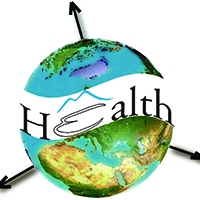Does the Geohealth domain require a body of knowledge?

Published: 29 November 2022
Abstract Views: 1381
PDF: 531
HTML: 21
HTML: 21
Publisher's note
All claims expressed in this article are solely those of the authors and do not necessarily represent those of their affiliated organizations, or those of the publisher, the editors and the reviewers. Any product that may be evaluated in this article or claim that may be made by its manufacturer is not guaranteed or endorsed by the publisher.
All claims expressed in this article are solely those of the authors and do not necessarily represent those of their affiliated organizations, or those of the publisher, the editors and the reviewers. Any product that may be evaluated in this article or claim that may be made by its manufacturer is not guaranteed or endorsed by the publisher.
Similar Articles
- Maria Buxò-Pujolrás, José Miguel Martínez, Yutaka Yasui, Carme Borrell, Juan Carlos Martín, Montserrat Vergara, Marta Cervantes, Joan Benach, Monitoring the cluster of high-risk mortality areas in the southwest of Spain , Geospatial Health: Vol. 7 No. 1 (2012)
- Micaela Natalia Campero, Carlos Matías Scavuzzo, Veronica Andreo, María Sol Mileo, Micaela Belén Franzois, María Georgina Oberto, Carla Gonzalez Rodriguez, María Daniela Defagó, A geospatial analysis of cardiometabolic diseases and their risk factors considering environmental features in a midsized city in Argentina , Geospatial Health: Vol. 18 No. 2 (2023)
- Kamukama Ismail, Gilbert Maiga, Denis Ssebuggwawo, Peter Nabende, Ali Mansourian, Spatio-temporal trends and distribution patterns of typhoid disease in Uganda from 2012 to 2017 , Geospatial Health: Vol. 15 No. 2 (2020)
- Ulrik B. Pedersen, Dimitrios-Alexios Karagiannis-Voules, Nicholas Midzi, Tkafira Mduluza, Samson Mukaratirwa, Rasmus Fensholt, Birgitte J. Vennervald, Thomas K. Kristensen, Penelope Vounatsou, Anna-Sofie Stensgaard, Comparison of the spatial patterns of schistosomiasis in Zimbabwe at two points in time, spaced twenty-nine years apart: is climate variability of importance? , Geospatial Health: Vol. 12 No. 1 (2017)
- Emily Phaboutdy, Michael Ward, Investigation of landscape risk factors for the recent spread of varroa mite (Varroa destructor) in European honeybee (Apis mellifera) colonies in New South Wales, Australia , Geospatial Health: Vol. 19 No. 1 (2024)
- Isabelle Lebert, Séverine Bord, Christine Saint-Andrieux, Eva Cassar, Patrick Gasqui, Frédéric Beugnet, Karine Chalvet-Monfray, Sophie O. Vanwambeke, Gwenaël Vourc’h, Magalie René-Martellet, Habitat suitability map of Ixodes ricinus tick in France using multi-criteria analysis , Geospatial Health: Vol. 17 No. 1 (2022)
- Zhao Rong Huang, Miao Ge, Xin Rui Pang, Pu Song, Congxia Wang, The spatial distribution of interleukin-4 (IL-4) reference values in China based on a back propagation (BP) neural network , Geospatial Health: Vol. 18 No. 2 (2023)
- Bernada E. Sianga, Maurice C. Mbago, Amina S. Msengwa, The distribution of cardiovascular diseases in Tanzania: a spatio-temporal investigation , Geospatial Health: Vol. 19 No. 2 (2024)
- Kelly A. Patyk, Mary J. McCool-Eye, David D. South, Christopher L. Burdett, Susan A. Maroney, Andrew Fox, Grace Kuiper, Sheryl Magzamen, Modelling the domestic poultry population in the United States: A novel approach leveraging remote sensing and synthetic data methods , Geospatial Health: Vol. 15 No. 2 (2020)
- Michael T. Gebreslasie, Ides Bauwens, MALAREO: a user-driven project , Geospatial Health: Vol. 10 No. 2 (2015)
<< < 1 2 3 4 5 6 7 8 9 10 > >>
You may also start an advanced similarity search for this article.

 https://doi.org/10.4081/gh.2022.1171
https://doi.org/10.4081/gh.2022.1171








